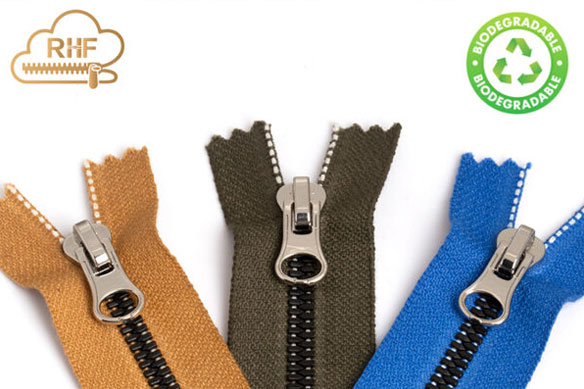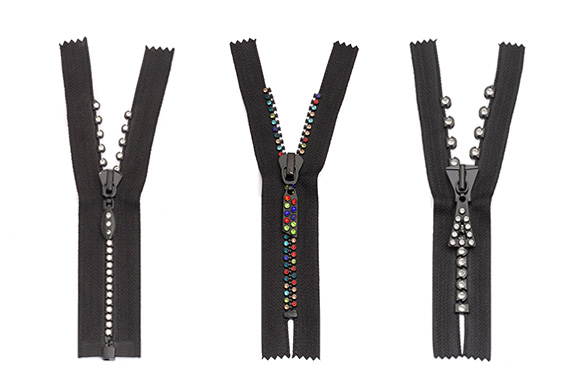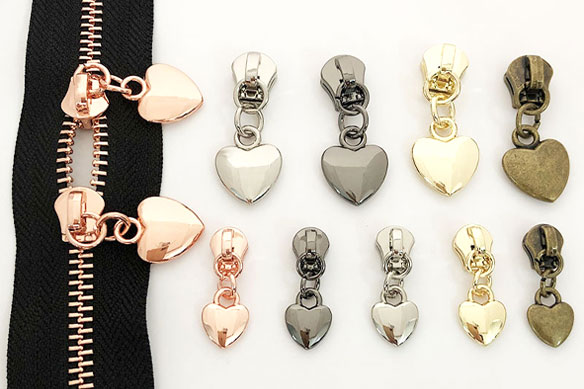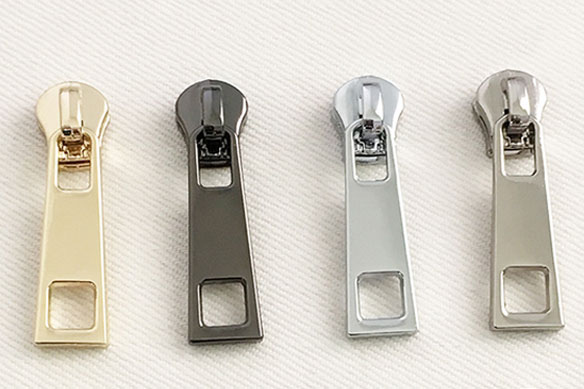Introduction
Genuine leather bags are a symbol of luxury and durability, but many owners notice that the metal zippers on these bags tend to tarnish or corrode faster than expected. This issue not only affects the appearance of the bag but can also reduce its functionality if the zipper becomes difficult to open or close. The primary reason behind this accelerated tarnishing lies in the interaction between the metal and the leather’s acidic properties. In this section, we explore why this happens and which types of metal zippers are more prone to corrosion.
1.Why Do Metal Zippers Tarnish Faster on Leather Bags?
The Acidic Nature of Leather
Genuine leather has a naturally acidic pH level, typically ranging from 3 to 5.5. This acidity is a result of the tanning process, which preserves the leather and gives it its durability. However, when metal zippers come into direct contact with this acidity, a chemical reaction occurs, leading to oxidation and corrosion over time.
Moisture & Humidity Exposure
Leather absorbs moisture from the environment, including humidity, sweat, and rain. When moisture comes into contact with metal zippers, it accelerates the oxidation process, causing discoloration, rust, or a dull, aged look. In humid climates or when leather bags are stored in damp conditions, this process happens even faster.
Chemical Reactions with Tanning Agents
Leather is treated with various chemicals during the tanning process, including chrome tanning and vegetable tanning. These tanning agents may contain residual salts or other reactive elements that interact with metals, further increasing the risk of tarnishing or corrosion.
Friction and Wear Over Time
Regular use of a leather bag means that the zipper is constantly being handled, zipped, and unzipped. This repeated friction can wear down any protective coatings on the metal, exposing it to direct contact with the leather’s acidity and environmental moisture. Over time, this exposure accelerates oxidation, leading to a loss of shine, discoloration, and even minor surface pitting.
2.Types of Metal Zippers & Their Corrosion Rates
Most metal zippers used in leather bags undergo electroplating, which involves coating the base metal (such as brass or zinc alloy) with a protective layer like nickel, gold, or gunmetal plating. This electroplating helps prevent direct oxidation, but over time, friction, moisture, and acidic exposure from leather can degrade the plating, exposing the base metal underneath.
The table below provides a comparison of different metal zipper materials and their oxidation resistance:
| Metal Type | Oxidation Susceptibility | Common Issues | Why It’s Used in Leather Bags? |
|---|---|---|---|
| Brass (Plated) | Moderate | Plating wears off, exposing brass which darkens over time | Strong base metal, good adhesion with electroplating, widely used in luxury bags |
| Copper (Plated) | Moderate | Tarnishing occurs if plating wears off, slight green oxidation possible | Excellent plating adhesion, used in decorative zippers |
| Zinc Alloy (Plated) | Moderate | Dulling, light rust in humid areas | Affordable and lightweight, common in budget-friendly bags |
| Nickel-Plated | Low | Mild discoloration over time | Provides a sleek, corrosion-resistant finish for everyday bags |
| Stainless Steel | Very Low | Highly resistant to tarnishing | Best for outdoor and heavy-use bags due to high durability |
Many high-end brands use brass or copper as base metals for zippers because their electroplating adheres well, ensuring a longer-lasting finish. However, once the plating begins to wear off due to friction and environmental exposure, the underlying metal can react with leather’s acidity, leading to visible tarnishing or discoloration. This is why protective coatings and regular maintenance are essential to prolonging zipper longevity.
3. Protective Coatings & Materials
The best way to prevent metal zippers from corroding on leather bags is by using protective coatings. Manufacturers can apply specialized finishes to metal zippers to enhance their resistance to oxidation and discoloration.
- Electroplating: Nickel, chrome, or gold plating provides a barrier against corrosion and extends the lifespan of the zipper.
- Lacquer Coating: A thin layer of transparent lacquer can be applied to prevent direct contact between the leather’s acidity and the metal surface.
- Anti-Oxidation Treatments: Some high-end brands use advanced chemical treatments to slow down metal oxidation.
4. Proper Leather & Zipper Maintenance
Regular maintenance can significantly reduce the risk of zipper tarnishing. Here are some key tips:
- Keep the zipper dry: Avoid exposing the bag to excessive moisture, and store it in a dry place.
- Use a protective zipper lubricant: Applying a light coat of beeswax or specialized zipper lubricant helps reduce friction and prevents plating wear.
- Clean zippers gently: Use a soft cloth and mild metal cleaner to remove dirt and residues without damaging the electroplating.
- Condition the leather: Keeping the leather well-conditioned reduces its acidity and helps maintain the protective coatings on the metal zipper.
5.Recommendations for Manufacturers & Designers
For manufacturers and designers of high-end leather bags, choosing the right zipper material and applying protective coatings is crucial to maintaining quality and longevity. Some key recommendations include:
- Apply a high-quality electroplated finish: For luxury bags, ensure that the zipper is plated with nickel, chrome, gold, or a gunmetal finish to minimize direct exposure to acidity.
- Use an additional lacquer layer: A transparent protective lacquer can further shield the metal surface from oxidation and slow down plating wear.
- Limit direct metal-leather contact: Consider design modifications where the zipper teeth and slider have minimal direct contact with untreated leather areas.
- Regularly test zippers for corrosion resistance: Implement strict quality control processes to assess how zippers react to acidic leather and environmental conditions before finalizing production.
6.Conclusion & Final Tips
Understanding why metal zippers tarnish on leather bags allows both manufacturers and consumers to take proactive steps in preventing it. The best solutions include:
- Using high-quality electroplated zippers with strong adhesion properties
- Applying protective coatings or lacquer layers
- Regular maintenance, including cleaning and conditioning the leather and metal
- Choosing the right zipper material based on the bag’s usage
By implementing these strategies, leather bag owners can extend the lifespan of their zippers while maintaining the bag’s aesthetic appeal and functionality.





